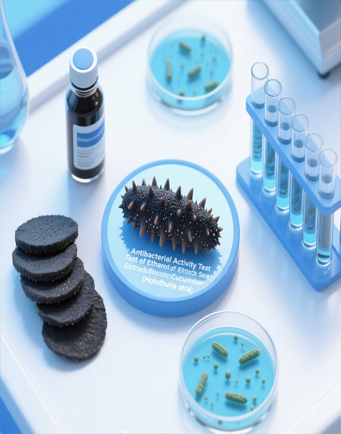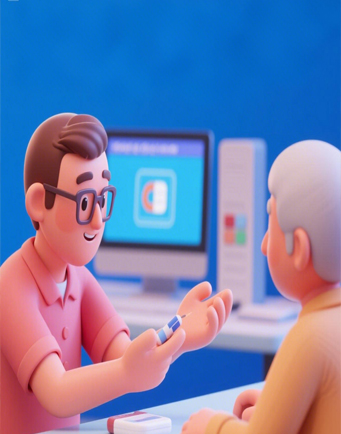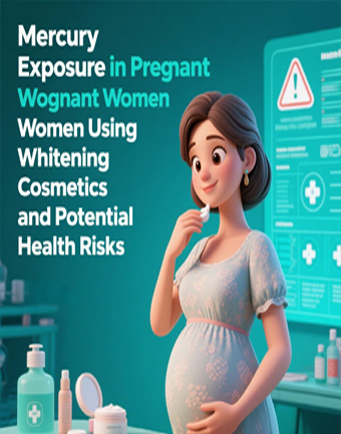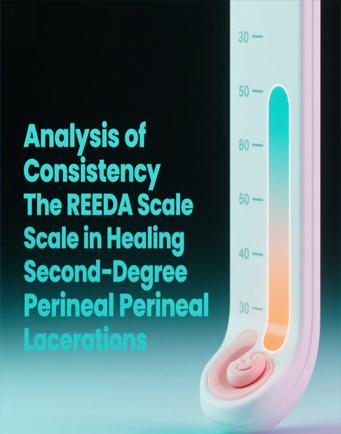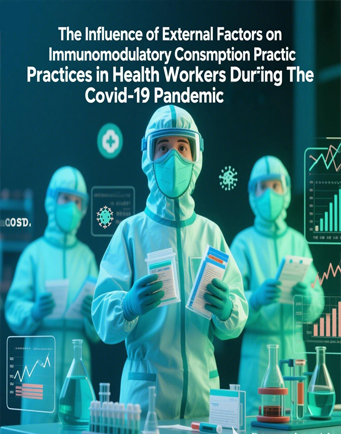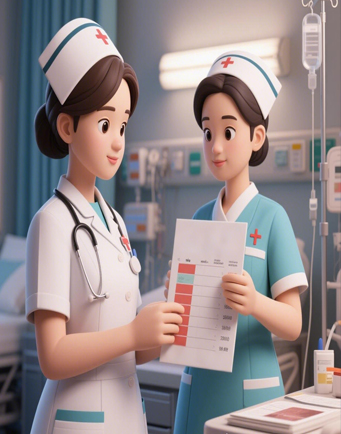The Effect of Multimedia-Based Education on Knowledge, Attitudes, and Behavior Hypertension Patients in Stroke Prevention
Downloads
The prevalence of hypertension continues to increase, and various epidemiological studies revealed an increase in the incidence of hypertension in different parts of the world. According to the American Heart Association (AHA), The number of Americans over the age of 20 who suffer from hypertension has risen to 74.5 million, while nearly 90% of cases have no identified cause. If not treated effectively, hypertension may cause damage to blood vessels throughout the body, the most prominent of which is the danger of damage to the brain, eyes, heart, and kidneys. An introduction to stroke is essential for reducing the risk of stroke in people with hypertension. Multimedia is one of the developments in health education media, which is in accordance with the advancement of digital technology, incorporating stroke prevention. This study aims to examine the impact of multimedia-based education on hypertension patients' knowledge, attitudes, and behavior toward stroke prevention. This research is a quasi-experiment with a pre-posttest with a control group design. The sampling technique employed was simple random sampling, and the sample size determination utilized a hypothesis test of the average difference in two independent groups of 60 respondents. Data analysis in this study administered paired t-test and independent t-test. The results unveiled that there were significant differences in knowledge (p=0.022), attitudes (p=0.001), and behavior (p=0.008) of hypertension patients in preventing stroke after intervention in the form of multimedia-based education. Therefore, it is recommended that the community can perform hypertension treatment independently frequently, and the implementation of the prolanis program can be enhanced so that people can receive services easily and regularly to prevent stroke.
Agustini, A. (2019). Hubungan Pengetahuan, Sikap, dan Dukungan Keluarga dengan Pencegahan Hipertensi pada Lansia. Jurnal Keperawatan Dan Kesehatan Medisina AKPER YPIB Majalengka. V(10), 1-17. Retrieved from https://ejournal.akperypib.ac.id/wp-content/uploads/2019/07/MEDISINA-Jurnal-Keperawatan-dan-Kesehatan-AKPER-YPIB-MajalengkaVolume-V-Nomor-10-Juli-2019-11.pdf
Bell, K., Twiggs, J., Olin, B. R., & Date, I. R. (2015). Hypertension: the silent killer: updated JNC-8 guideline recommendations. Alabama Pharmacy Association, 334, 4222.
Cherubini, A., Lowenthal, D. T., Paran, E., Mecocci, P., Williams, L. S., & Senin, U. (2010). Hypertension and cognitive function in the elderly. Disease-a-Month, 56(3), 106–147. https://doi.org/10.1016/j.disamonth.2009.12.007
Dinata, W. W. (2015). Menurunkan Tekanan Darah pada Lansiamelalui Senam Yoga. JORPRES (Jurnal Olahraga Prestasi), 11(2). Retrieved from https://journal.uny.ac.id/index.php/jorpres/article/view/5730
Gao, Y., Chen, G., Tian, H., Lin, L., Lu, J., Weng, J., Jia, W., Ji, L., Xiao, J., & Zhou, Z. (2013). Prevalence of hypertension in China: a cross-sectional study. PloS One, 8(6), e65938. https://doi.org/10.1371/journal.pone.0065938
Haryono, S., Krisanty, P., & Manurung, S. (2018). Diet Health Education Effect on Elderly Behavior with Hypertension. Asian Journal of Applied Sciences, 6(6), 523-526. https://doi.org/10.24203/ajas.v6i6.5566
Kementerian Kesehatan Republik Indonesia. (2018). Hasil utama riskesdas 2018. Jakarta: Badan Penelitian dan Pengembangan Kesehatan, Kemennterian Kesehatan Republik Indonesia.
Kementerian Kesehatan Republik Indonesia. (2013). Riset kesehatan dasar tahun 2013. Badan Penelitian dan Pengembangan Kesehatan, Kementerian Kesehatan Republik Indonesia.
Larasiska, A., & HN, W. P. (2017). Menurunkan tekanan darah dengan cara mudah pada lansia. IJNP (Indonesian Journal of Nursing Practices), 1(2), 55–63. https://doi.org/10.18196/ijnp.v1i2.3438
Lemeshow, S., Hosmer, D. W., & Klar, J. (1990). Besar sampel dalam penelitian kesehatan. Yogyakarta. Gajah Mada Press.
Lionakis, N., Mendrinos, D., Sanidas, E., Favatas, G., & Georgopoulou, M. (2012). Hypertension in the elderly. World Journal of Cardiology, 4(5), 135-147. https://doi.org/10.4330/wjc.v4.i5.135
Malik, A., Yoshida, Y., Erkin, T., Salim, D., & Hamajima, N. (2014). Hypertension-related knowledge, practice and drug adherence among inpatients of a hospital in Samarkand, Uzbekistan. Nagoya Journal of Medical Science, 76(3–4), 255-263. Retrieved from https://pubmed.ncbi.nlm.nih.gov/25741034/
Mardhiah, A., & Asnawi Abdullah, H. (2015). Pendidikan Kesehatan dalam Peningkatan Pengetahuan, Sikap dan Keterampilan Keluarga dengan Hipertensi-Pilot Study. Jurnal Ilmu Keperawatan, 3(2), 111-121. Retrieved from https://jurnal.unsyiah.ac.id/JIK/article/view/5310
Nita, Y. (2018). Hubungan dukungan keluarga dengan kepatuhan diet pasien hipertensi di Puskesmas Payung Sekaki Pekanbaru Tahun 2017. Jurnal Ilmu Kesehatan, 6(1), 90–97. Retrieved from https://journals.umkt.ac.id/index.php/jik/article/view/103
Notoatmodjo, S. (2010). Ilmu Perilaku Kesehatan. Jakarta: Rineka Cipta.
Pangestuti, E., Larasati, A. D., & Vitani, R. A. I. (2022). Gambaran Kualitas Hidup pada Pasien Hipertensi selama Pandemi Covid-19. Jurnal Keperawatan Jiwa (JKJ): Persatuan Perawat Nasional Indonesia, 10(1), 219–228. https://doi.org/10.26714/jkj.10.1.2022.219-228
Pinto, I. C., & Martins, D. (2017). Prevalence and risk factors of arterial hypertension: A literature review. Journal of Cardiovascular Medicine and Therapeutics, 1(2), 1–7.
Rayanti, R. E., Nugroho, K. P. A., & Marwa, S. L. (2021). Health Belief Model dan management hipertensi pada penderita hipertensi primer di Papua. Jurnal Keperawatan Muhammadiyah, 6(1), 19-30. http://dx.doi.org/10.30651/jkm.v6i1.7065
Sabouhi, F., Babaee, S., Naji, H., & Zadeh, A. H. (2011). Knowledge, awareness, attitudes and practice about hypertension in hypertensive patients referring to public health care centers in Khoor & Biabanak. Iranian Journal of Nursing and Midwifery Research, 16(1), 34-40. Retrieved from https://www.ncbi.nlm.nih.gov/pmc/articles/PMC3203297/
Safitri, I. N. (2013). Kepatuhan penderita diabetes mellitus tipe II ditinjau dari locus of control. Jurnal Ilmiah Psikologi Terapan, 1(2), 273–290. Retrieved from https://ejournal.umm.ac.id/index.php/jipt/article/view/1583
Sani, F., Ramadhani, N & Pitriani, D. (2019). Studi Faktor Resiko dan Hubungannya dengan Jenis Kelamin Pasien Hipertensi di Puskesmas Manna Kota Bengkulu. Jurnal Ilmiah Pharmacy, 6(2), 403-411. https://doi.org/10.52161/jiphar.v6i2.77
Saputri, M. A. W., & Indrawati, E. S. (2011). Hubungan antara dukungan sosial dengan depresi pada lanjut usia yang tinggal di panti wreda wening wardoyo Jawa Tengah. Jurnal Psikologi, 9(1), 65-72. https://doi.org/doi.org/10.14710/jpu.9.1.
Sulastri, D., Elmatris, E., & Ramadhani, R. (2012). Hubungan obesitas dengan kejadian hipertensi pada masyarakat etnik minangkabau di kota padang. Majalah Kedokteran Andalas, 36(2), 188–201. https://doi.org/10.22338/mka.v36.i2.p188-201.2012
Sumah, D. F. (2019). Efektivitas Pendidikan Kesehatan dan Senam Hipertensi terhadap Perubahan Tekanan Darah dan Pengetahuan Pasien Hipertensi di Puskesmas Kecamatan Nusaniwe Ambon. Global Health Science, 4(2), 71–79. Retrieved from http://jurnal.csdforum.com/index.php/GHS/article/view/ghs4206
Suratun, S., Ekarini, N. L. P., & Sumartini, M. (2018). Pengaruh Edukasi Gaya Hidup Sehat terhadap Pencegahan Dini Hipertensi pada Remaja. Jkep, 3(2), 131–142. https://doi.org/10.32668/jkep.v3i2.208
Suyoto, S., Agushybana, F., & Suryoputro, A. (2020). Pengaruh Penggunaan Aplikasi Patuh terhadap Kepatuhan Melakukan Diet Hipertensi pada Pasien Hipertensi di Kabupaten Wonosobo. Jurnal Penelitian Dan Pengabdian Kepada Masyarakat UNSIQ, 7(1), 31–37. https://doi.org/10.32699/ppkm.v7i1.956
Ulya, Z., Iskandar, A., & Triasih, F. (2018). Pengaruh pendidikan kesehatan dengan media poster terhadap pengetahuan manajemen hipertensi pada penderita hipertensi. Jurnal Keperawatan Soedirman, 12(1), 38–46. https://doi.org/10.20884/1.jks.2017.12.1.715
Ungar, A., Rafanelli, M., Iacomelli, I., Brunetti, M. A., Ceccofiglio, A., Tesi, F., & Marchionni, N. (2013). Fall prevention in the elderly. Clinical cases in mineral and bone metabolism : the official journal of the Italian Society of Osteoporosis, Mineral Metabolism, and Skeletal Diseases, 10(2), 91–95. Rerieved from https://www.ncbi.nlm.nih.gov/pmc/articles/PMC3797008/
Wijayanto, W., & Satyabakti, P. (2014). Hubungan tingkat pengetahuan komplikasi hipertensi dengan keteraturan kunjungan penderita hipertensi usia 45 tahun ke atas. Jurnal Berkala Epidemiologi, 2(1), 24–33.
World Health Organization. (2013). A global brief on hypertension: silent killer, global public health crisis: World Health Day 2013. World Health Organization.
Yano, Y., Stamler, J., Garside, D. B., Daviglus, M. L., Franklin, S. S., Carnethon, M. R., Liu, K., Greenland, P., & Lloyd-Jones, D. M. (2015). Isolated systolic hypertension in young and middle-aged adults and 31-year risk for cardiovascular mortality: the Chicago Heart Association Detection Project in Industry study. Journal of the American College of Cardiology, 65(4), 327–335. https://doi.org/10.1016/j.jacc.2014.10.060.
Copyright (c) 2022 JURNAL INFO KESEHATAN

This work is licensed under a Creative Commons Attribution-NonCommercial-ShareAlike 4.0 International License.
Copyright notice
Ownership of copyright
The copyright in this website and the material on this website (including without limitation the text, computer code, artwork, photographs, images, music, audio material, video material and audio-visual material on this website) is owned by JURNAL INFO KESEHATAN and its licensors.
Copyright license
JURNAL INFO KESEHATAN grants to you a worldwide non-exclusive royalty-free revocable license to:
- view this website and the material on this website on a computer or mobile device via a web browser;
- copy and store this website and the material on this website in your web browser cache memory; and
- print pages from this website for your use.
- All articles published by JURNAL INFO KESEHATAN are licensed under the Creative Commons Attribution 4.0 International License. This permits anyone to copy, redistribute, remix, transmit and adapt the work provided the original work and source is appropriately cited.
JURNAL INFO KESEHATAN does not grant you any other rights in relation to this website or the material on this website. In other words, all other rights are reserved.
For the avoidance of doubt, you must not adapt, edit, change, transform, publish, republish, distribute, redistribute, broadcast, rebroadcast or show or play in public this website or the material on this website (in any form or media) without appropriately and conspicuously citing the original work and source or JURNAL INFO KESEHATAN prior written permission.
Permissions
You may request permission to use the copyright materials on this website by writing to jurnalinfokesehatan@gmail.com.
Enforcement of copyright
JURNAL INFO KESEHATAN takes the protection of its copyright very seriously.
If JURNAL INFO KESEHATAN discovers that you have used its copyright materials in contravention of the license above, JURNAL INFO KESEHATAN may bring legal proceedings against you seeking monetary damages and an injunction to stop you using those materials. You could also be ordered to pay legal costs.
If you become aware of any use of JURNAL INFO KESEHATAN copyright materials that contravenes or may contravene the license above, please report this by email to jurnalinfokesehatan@gmail.com
Infringing material
If you become aware of any material on the website that you believe infringes your or any other person's copyright, please report this by email to jurnalinfokesehatan@gmail.com.




